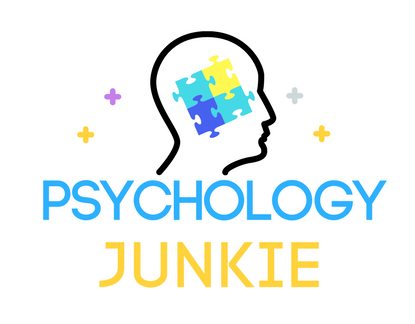What is Drew Barrymore’s Myers-Briggs® Personality Type?
Let’s be honest: If sunshine, glitter, and awkward dancing at a wedding reception had a baby, it would be Drew Barrymore. She’s open. She’s joyful. She will cry with you on national television and then try to make you cookies while over-apologizing for accidentally burning them. People seem to love her or hate her. While I personally don’t watch her show from beginning to end, I love seeing her reels and interviews because she just exudes so much empathy and joy. I can’t help but smile when I see how genuinely kind she is.
But she’s not just quirky. Or fun. Or “that actress from E.T. who grew up weird and made a comeback.” She’s complex. She’s resilient. She’s a walking contradiction in the most human, heart-thumping way.

And today we’re breaking down both her Myers-Briggs personality type and her Enneagram type.
Let’s get started!
ESFJ: Drew Barrymore’s Personality Type…But Why?

Alright, let’s break this down for anyone who’s new to the Myers-Briggs® world.
ESFJ is one of the sixteen Myers-Briggs personality types, and those four letters? They say a lot about how a person interacts with the world.
Let’s go through it, one letter at a time:
E = Extraversion
This means ESFJs recharge around people. They like engaging. It doesn’t mean they can’t enjoy solitude, but give them a group of friends and a heart-to-heart, and they’ll light up.
They also tend to talk to think (rather than think before talking). Conversations are how they process the world—not just social niceties, but real, meaningful exchanges.
S = Sensing
ESFJs focus on the here and now. They notice the real world—the temperature in the room, the look on your face, the weird energy between two coworkers who definitely had a fight over lunch.
They’re not lost in theories or “what ifs.” They’re grounded in reality and usually have a great memory for details, especially ones that matter to people.
F = Feeling
This doesn’t mean they’re “emotional.” (That stereotype can take a seat.) It means they make decisions based on values, relationships, and empathy.
When an ESFJ has to choose between logic and kindness, they’ll usually try to find a way to do both—but kindness wins. They want people to feel heard, included, and cared for. And if the vibe is off in a group, they feel it instantly—sometimes even before anyone else realizes it.
J = Judging
This doesn’t mean they’re judgmental—it just means they like structure. ESFJs appreciate plans, timelines, and knowing what’s expected of them. Surprises are cute in theory, but they’d rather get a heads-up so they can bring the right snack or wear the right shoes.
They also like closure. If something’s unresolved or awkward, they’ll try to fix it. Not because they’re controlling, but because unfinished emotional business makes them twitchy.
Now Let’s Talk Cognitive Functions
If the four letters are like the personality’s surface, the cognitive functions are what’s happening under the hood. These are the mental processes that shape how each type sees the world and makes decisions.
Here’s how it plays out for ESFJs:
1. Dominant Function: Extraverted Feeling (Fe)
This is the engine. The driving force. ESFJs lead with Fe, which means they naturally care about group harmony, emotional tone, and making sure everyone feels seen.
They’re social organizers, moral compasses, peacemakers. They don’t just notice how people are—they instinctively try to make things better. More connected. More warm. More together.
2. Auxiliary Function: Introverted Sensing (Si)
Si is what helps ESFJs stay grounded. It gives them a sharp memory for what’s worked in the past and a tendency to trust tried-and-true traditions or methods.
It’s why they often create comforting routines, remember your birthday and your favorite dessert, and love rehashing the past and waxing nostalgic about good memories.
3. Tertiary Function: Extraverted Intuition (Ne)
This one adds a little playfulness. It gives them bursts of creativity and curiosity—maybe even some quirky ideas or spontaneous moments when they try something completely out of character.
But it’s not their primary strength, so they can feel overwhelmed if there’s too much uncertainty floating around.
4. Inferior Function: Introverted Thinking (Ti)
Ti is like the little gremlin in the basement whispering, “But does this make sense?”
It’s not very strong in ESFJs, so while they can analyze and break things down logically, they don’t love doing it. And when they’re stressed, they might overanalyze their feelings or get caught in indecisiveness, trying to make everything make perfect internal sense when that’s not their usual wheelhouse.
TL;DR:
ESFJs are warm, grounded, empathetic planners who live to make others feel safe and included. They trust what’s real, value what’s right, and work hard to bring people together. When they’re healthy, they’re the glue in relationships and communities. When they’re stressed? They might get overly accommodating, overwhelmed by conflict, or tangled in their own thoughts.
ESFJ: The Host, The Connector, The Fe Machine
Extraverted Feeling (Fe) runs the show in ESFJs. These types instinctively tune into the emotional climate of a room like human emotional barometers. They don’t just want people to feel good—they need them to feel good in order to breathe properly. And Drew? She doesn’t just read the vibe, she becomes the vibe.
“I love hugging. I wish I was an octopus so I could hug ten people at a time.”
If that’s not peak ESFJ, I don’t know what is.
Fe is about adjusting to create harmony. Drew doesn’t sit in judgment—she leans in. She mirrors your feelings. She reflects your energy. She wants to connect. Desperately. Genuinely. Even when it’s messy.
“I always thought that self-love rhetoric sounded really selfish to me and it just did not resonate with me. I liked the fact that i was more about other people and that’s what made me happy and filled me up. but that has changed over time.”
In interviews, she opens with a vulnerability that would make most people feel naked.
On her talk show, she’s not reading off cue cards. She’s holding her guests’ hands (sometimes literally), locking eyes like she’s trying to drink in your soul, and asking questions that sound like they came from your most empathetic friend, not a network TV script.
“I Just Want Everyone to Feel Loved”
That could be an ESFJ motto. But Drew actually said it with her life. Raised in Hollywood chaos, tossed into addiction and fame way too early, she’s clawed her way toward self-understanding using connection as her compass.
“My whole life, I’ve wanted to feel comfortable in my skin. It’s the most liberating thing in the world.”
Fe types often get misread as people-pleasers. And, to be fair, they can go down that rabbit hole—especially when they start tying their self-worth to how well they can maintain peace or make people happy. But Drew’s a more mature ESFJ. She’s learned that real connection doesn’t come from pretending.
“There’s something liberating about not pretending. Dare to embarrass yourself. Risk.”
She wants harmony—but not fake harmony. And when the people around her are being honest, real, even ugly-cry real? She doesn’t flinch. She leans in. That’s the emotionally brave side of Fe—when it’s working at full capacity.
The “S” – Sensing: Grounded in Reality, Fueled by Memory
Drew doesn’t float off into fantasy land. She doesn’t get lost in endless hypotheticals or theories. Sure, she has a quirky side and can make some pretty amazing connections. But for the most part she’s here. She’s in the room. And she’s feeling everything that’s happening right now.
That’s Sensing.
Sensing types (especially SJs) take in life through real, tangible details. They’re grounded in the present moment, and they pull from their personal memories to make sense of what’s happening. They often use the past as a reference point.
Time and time again, Drew references her past as her greatest teacher. She pulls example after example from her childhood, stories about directors who gave her amazing advice, or a full blown recounting of her life on various sets.
Even her empathy is rooted in the specifics of life. Her show? It’s built around concrete stories, real people, and everyday emotions. She doesn’t live in abstraction—she doesn’t get overly political, theoretical, or conceptual. Instead, she lives in shared experience.
The “J” – Judging: Structure in the Chaos
Here’s the thing a lot of people misunderstand about Drew: just because she’s expressive and fun doesn’t mean she’s chaotic. She’s actually very structured. That’s the “J” in SJ.
Judging types like to know what’s coming. They plan. They organize. They like closure. And yes, even if their plans are full of color-coded emotions and glitter, they still have a plan.
Drew isn’t just winging it. She built her own production company, launched her own lifestyle brand, and hosts a successful talk show that requires massive coordination. That doesn’t happen with pure spontaneity and good vibes. That’s J-energy: “Let’s make it happen. Let’s structure the joy.”
She’s said:
“I don’t want to sit around and hope good things happen. I want to make them happen.”
That’s not a wanderer’s mantra. That’s a SJ’s mission statement. She’s not just hoping for connection—she’s creating the space for it to exist. Consistently. Daily. On a schedule.
The SJ Blueprint: Heart + History + Hustle
SJs—especially ESFJs—are all about creating safe, structured, emotionally warm environments. They remember what matters to people, they build systems around it, and they show up to maintain those systems.
That’s Drew in a nutshell.
She’s not an improvising rebel (like an SP). She’s not a future-obsessed idealist (like an NJ). She’s a grounded, present-focused, responsibility-taking, emotionally-attuned nurturer who wants things to work—and is willing to put in the effort to make sure they do.
She remembers birthdays. She cries with her guests. She probably brings snacks to every meeting, and not just because it’s nice—but because it’s the right thing to do. It makes people feel cared for.
Enneagram 7: The Joyful Escapist Who Can’t Sit Still
Let’s add a layer. Drew isn’t just an ESFJ—she’s a Seven. And this part of her explains the wild sparkle in her eye. The craving for fun. The deep existential fear of being trapped in sadness. The compulsive movement toward more. More fun. More experience. More hugs. More slumber parties (which, by the way, she still wants to have).
“The older you get, the fewer slumber parties there are, and I hate that. I liked slumber parties. What happened to them?”
That’s a Seven speaking directly to your inner child and your midlife crisis in the same breath.
Enneagram 7s are known for their optimism and high energy, but it’s not all balloon animals and Pinterest boards. That happiness is a defense mechanism. They run toward joy the way some people run from fire—because sadness, pain, and grief feel like black holes. And they’re terrified of getting stuck.
Drew is honest about this duality.
“I am fundamentally happy. Everyone has experiences that make them cynical, jaded, or unhappy—you just have to fight those things off. I have totally emotional days when I cry and get insecure. PMS weirded out, doomed and tragic. I mean, I’m definitely not just a lollipop, happy-in-the-wind girl. I’m human just like everyone else…”
That’s a Seven who’s done the work. Who knows she’s not made of cotton candy and glitter glue. Who’s integrated her pain and still chooses to smile.
What We Can Learn from Drew
If you’re an ESFJ or a Seven—or both—you may see yourself in Drew. The need to bring people together. The craving for joy. The deep feelings that sometimes come out sideways because you don’t always know where to put them.
You may feel too much. You may do too much. You may wonder if you’re only worth loving when you’re fun, helpful, or emotionally available.
But Drew reminds us that true connection doesn’t come from being perfect or positive all the time. It comes from being real. And from choosing connection—even when it’s awkward, even when it hurts, even when you’ve cried on live TV and then invited your guest into a group hug afterward.













